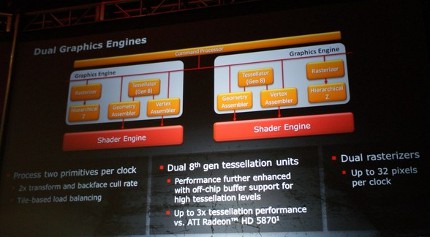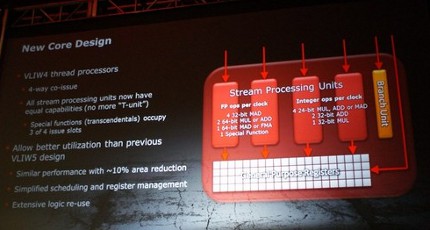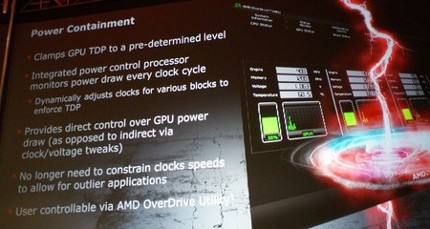One of the take-home messages from our review of AMD's Radeon HD 6800-series graphics-cards was that the fundamental architecture really wasn't that different to the HD 5870 that preceded it.
It doesn't look like this will be the case with the upcoming HD 6900-series GPUs, though. According to slides from an AMD presentation - which just came out of NDA, in spite of the fact that the cards had been delayed - the company's engineers have made quite a few changes since we first saw the Evergreen architecture.
The biggest is that the GPU will be split into two identical graphics engines. If you compare the block diagrams to those for the HD 6870, you'll see that the shader engines now feed into two separate graphics engines which then recombine into a shared 256-bit memory controller.

Both engines will also be tied to the same command processor and there will apparently be aggressive load balancing between the two. In essence, this means that the chip will function a bit like an advanced dual-GPU graphics card made of two cut back HD 6800-series chips.

There are also optimisations to the tessellation engine, which AMD claims will let the HD 6970 outperform the HD 5870 by 200 per cent on average and by as much as 300 per cent in some scenarios.
The streaming processor cores will see a major redesign as well. Whereas older GPUs from the company used a VLIW5 design with one 'smart' and four 'simple' units, the new cores will use a VLIW4 design where each unit is smart and capable of both floating-point and integer operations. This should allow for simpler resource management and similar performance in a space that's about ten per cent smaller.

Rounding out the major updates will be new power circuitry that offers overclockers greater control over the board's power-usage. Now, instead of tuning a card by adjusting clock speeds and voltages the maximum TDP can be set and the on-board power circuitry will automatically and dynamically adjust the performance profile to fit within that thermal-envelope. Exactly how this will work remains a mystery, and it still isn't clear how much control overclockers will actually have.

Whereas the 'Barts' chips seemed like an efficiency tweak, the Cayman GPUs seem to be a legitimate overhaul to the Evergreen architecture and a worthy upgrade to the older cards. Unfortunately though, the clock speeds and shader counts weren't set at the time of this presentation, meaning that we still won't know for sure how AMD's latest and greatest will actually perform.













